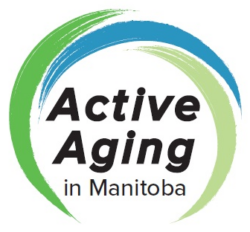It’s easy to fall into a more sedentary lifestyle. Staying active is paramount for healthy active aging; it’s an important part of maintaining a healthy body and mind.
You can remain active and maintain independence as you age by following the Canadian 24-Hour Movement Guidelines. These guidelines illustrate how you can integrate active aging into your everyday lifestyle. This program was created in partnership with the Public Health Agency of Canada, Queen's University, and ParticipACTION.
Make movement part of your everyday life, and you can enjoy these health benefits for your body and mind:
- Reduced risk of cardiovascular disease, falls and injuries, Type 2 Diabetes, anxiety, depression, dementia etc.
- Better bone health & muscle strength
- Move with fewer aches and pains
- Prevent & help manage chronic conditions
- Improved quality of life
Age actively by moving more, reducing sedentary time, and sleeping well. Here are some suggestions.
Move More
The Canadian Guidelines suggest that each week, you should try to spend 150 minutes doing moderate to vigourous activity. If you are new to physical activity or haven’t done anything for awhile, start slowly and check with your doctor first. Light physical activity, such as cleaning your house, unpacking groceries is also counted as movement, it’s just not as intense as going for a walk or a bicycle ride; however, remember - everything counts.
When you hear that it’s important to “move more”, you might wonder what that entails exactly. Let’s distinguish between the different types of movement intensities:
- Light physical activity
- This is a form of exercise that involves movement but will not cause you to break a sweat or experience shortness of breath. Examples; gardening, tidying or light cleaning, playing a game of horseshoes.
- Moderate to vigourous physical activity
- During this kind of movement, your heart rate will speed up, your body temperature will increase, and your skin will sweat. Examples; dancing, walking briskly, urban poling, swimming etc.
Try to incorporate exercises that strengthen your muscles (2x a week) and challenge your balance too, aiding in falls prevention. Maintaining your balance and agility will help you to prevent a fall, one of the most important things you can do to stay independent as you get older. For more information, visit Prevent Falls.
Reduce Sedentary Time
In our digitally-driven world, it’s easy to spend hours in front of a screen. But the Canadian Guidelines recommend that you limit sedentary time to less than 8 hours a day. Sedentary behaviour is defined as any time a person is sitting or laying down. Avoid spending more than 3 hours a day on recreational screen time.
When you’re doing a task that involves hours of sitting down, try to schedule movement breaks. You can set a timer that alerts you every 30 minutes to stand up and walk around before resuming your task. Check out our Take a Minute to Move breaks on our website, a great way to inject a movement break into prolonged periods of stationary activity.
Sleep Well
When you have a night of poor sleep, it affects how you feel throughout the following day. You have less energy for everyday activities, including errands, meal prep, and even leisure time.
Aim to get 7-8 hours of sleep each night. This gives your body ample time to repair and recover during a good night’s rest.
When you’re establishing a sleep routine, consistency is key. Waking and sleeping at the same time will signal your body when it’s time to get up or wind down. In turn, this helps you feel more alert when your day begins, and you’ll have an easier time falling asleep. Learn more about why good sleep is a key piece of a healthy lifestyle with this educational video.
Types of Exercises
You want to make your day-to-day life more active, but you aren’t sure which exercises to try. Be sure to check in with your Doctor prior to exercising. Here are some suggestions:
If you want to strengthen your muscles, try resistance training, or yard work such as digging in a garden or shovelling. Some functional exercises are good to start with; see the Take a Minute to Move Exercises on our website.
For bone strength, you can practice walking, pickleball, golf, bowling, etc. And finally, to improve your balance and stability, try yoga or Tai Chi.
Age Actively With Your Community
Making positive lifestyle changes is easier with the support of your community. At Active Aging in Manitoba, our goal is to help older adults learn more about leading healthy lifestyles. Find out how to get involved with our annual events (including the Manitoba 55+ Games), speakers bureau, or become a Peer Leader when you contact us today!
